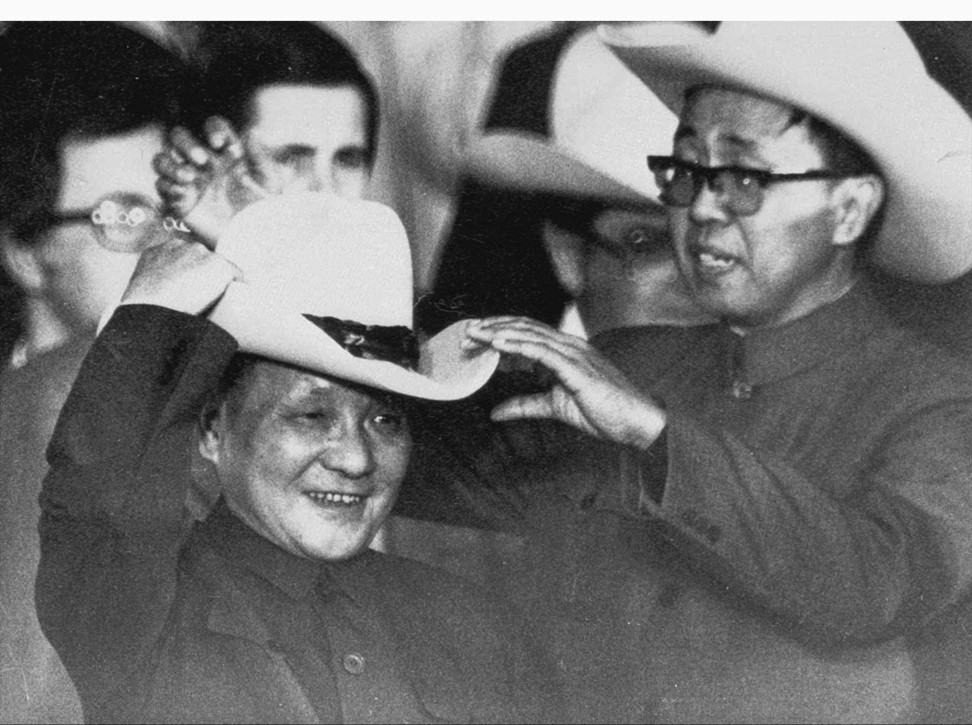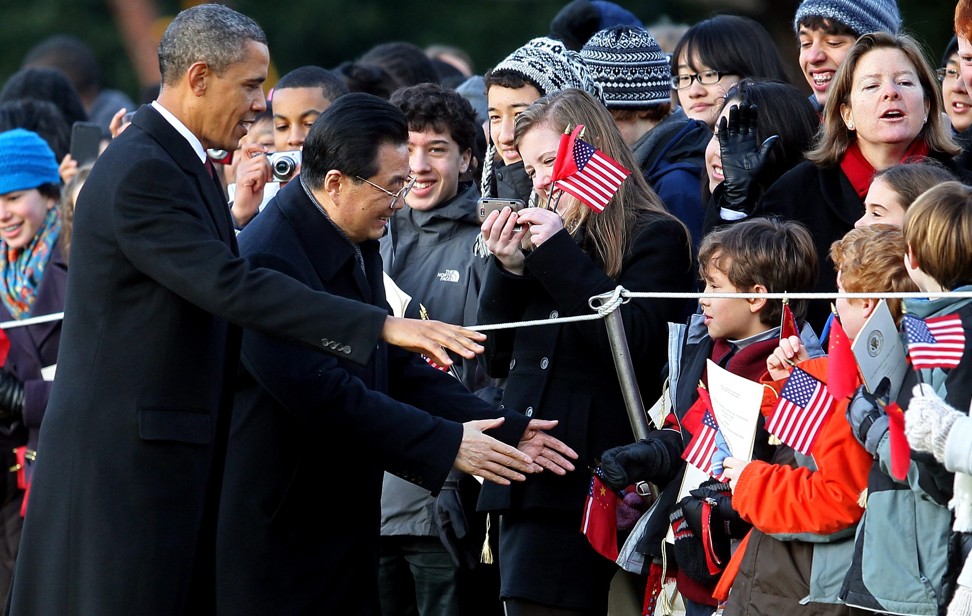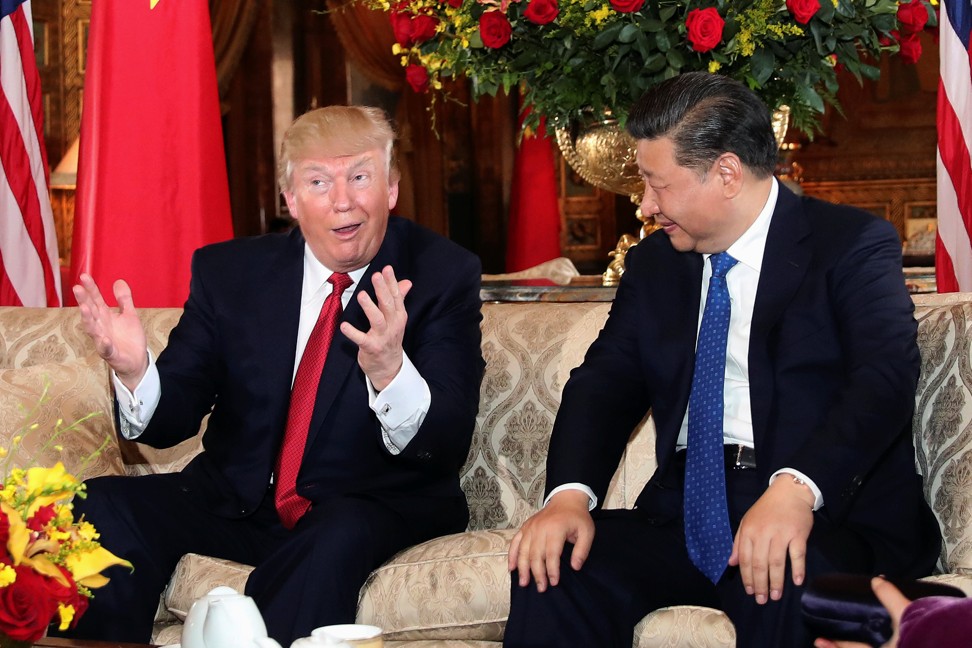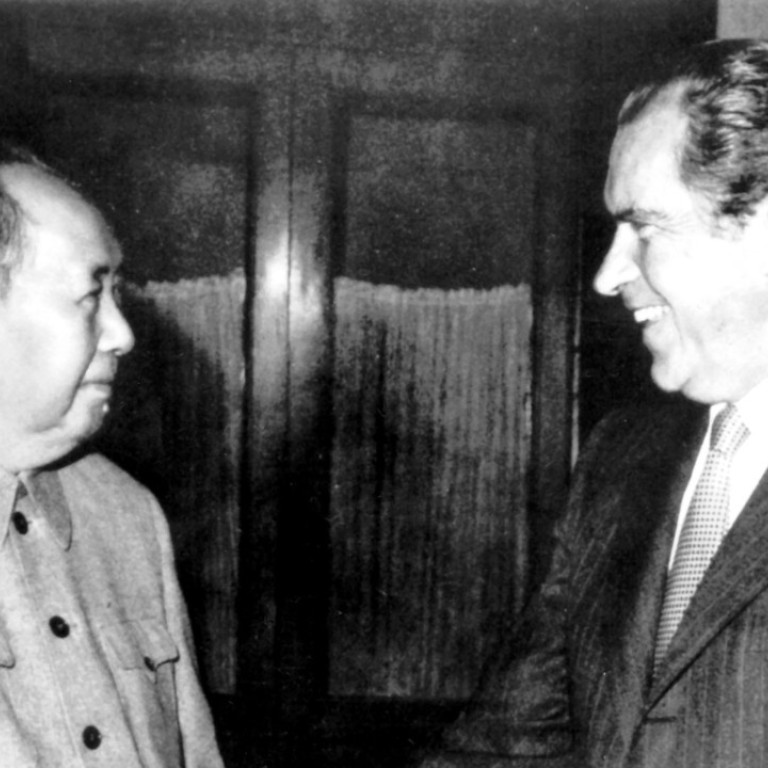
Baffled by China’s relationship with the United States? Here’s all you need to know …
From Mao Zedong’s groundbreaking meeting with Richard Nixon in 1972, to Xi Jinping’s tea room talks with Donald Trump in 2017, our potted guide has it all
United States President Donald Trump’s references to China as a competitor and challenger to American power in his national security strategy speech on Monday confirmed that in Washington’s eyes at least, Sino-US relations have entered a new era.
His allegations that China (and Russia) were “attempting to erode American security and prosperity” should come as little surprise, however. In the more than four decades since Chinese leader Mao Zedong and US President Richard Nixon re-established diplomatic relations between the two countries – after a 25-year hiatus caused by Washington’s support for Chiang Kai-shek’s Nationalists during the Chinese Civil War – relations between the world’s most populous and most powerful nations have seesawed.
Here’s how Trump’s eight predecessors and the Chinese leaders they worked with regarded the relationship:
Richard Nixon (1969-74)
In February 1972, Nixon became the first US president to visit the People’s Republic of China after the Communist Party, under Mao Zedong, came to power in 1949. During his seven-day trip, the two countries signed the Shanghai Communique, which not only acknowledged the one-China principle – that mainland China and Taiwan are inalienable parts of the same country – but also saw the beginning of a normalisation of relations.
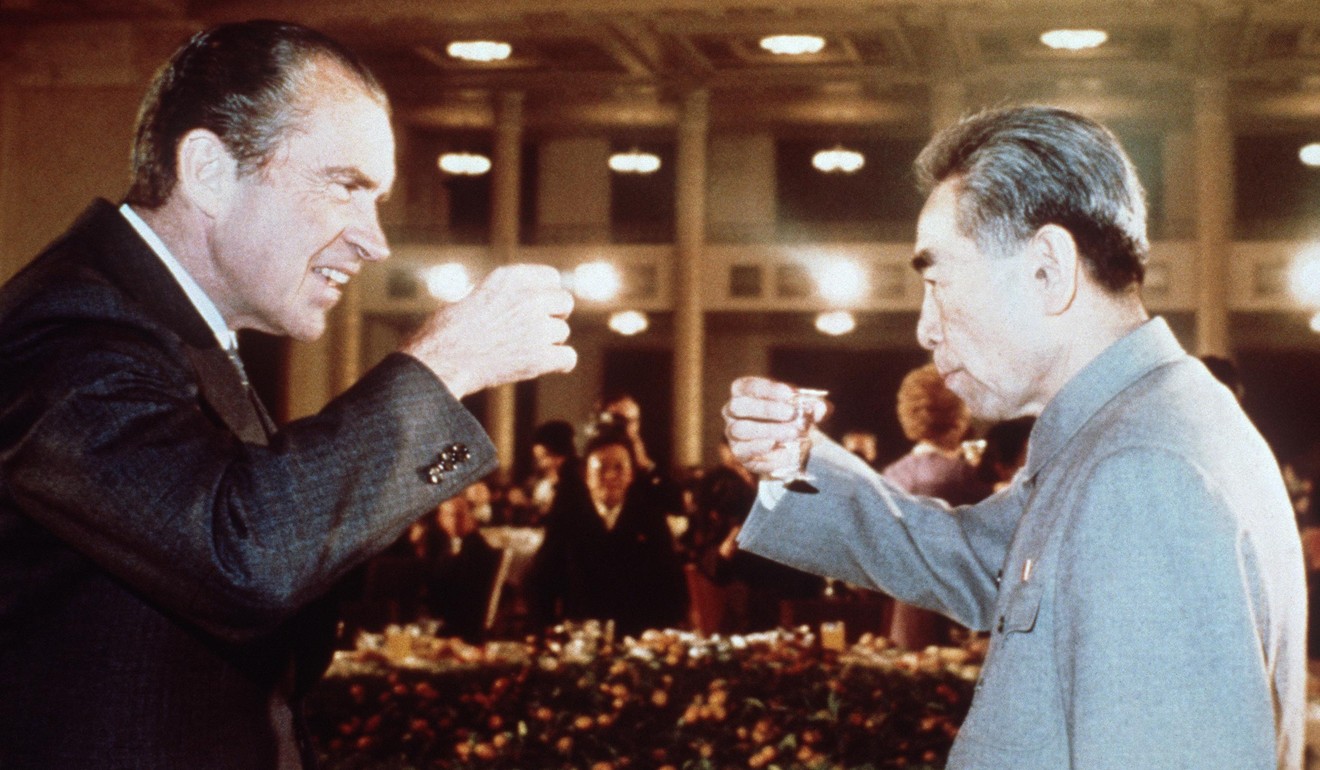
In a meeting between Nixon and Mao in Beijing – also attended by US National Security Adviser Henry Kissinger and Chinese Premier Zhou Enlai – Nixon said that neither China nor the US would dominate the world, but instead would find common ground to build a world structure in which both could be safe to develop in their own way.
Mao Zedong (1949-76)
After closing its doors to the outside world for decades, Mao’s decision to welcome Nixon to Beijing marked the start of a new era for China.
After 40 years of political upheaval, the founding chairman of the Communist Party of China had set himself the task of transforming the country. His meeting with the US president laid the foundations for the opening up policy that would follow later in the decade, after his death, and detailed the issues in the Sino-US relationship that were of greatest concern to Beijing, several of which remain so to this day.
However, when Nixon said he would like to discuss Taiwan, Vietnam, Korea, the future of Japan, and India’s role in the region with the Chinese leader, Mao was reluctant. “All those troublesome problems I don’t want to get into very much”, he said, adding that he preferred to discuss “philosophic questions”.
Gerald Ford (1974-77)
When Ford visited Beijing in 1975, he reaffirmed the United States’ commitment to “complete the normalisation of relations” with China on the basis of the Shanghai Communique.
During a banquet held in his honour in Beijing, the US president said: “The visit confirmed that although our relations are not yet normalised, they are good. They will be gradually improved because we both believe that a strengthening of our ties benefits our two peoples.”
Jimmy Carter (1977-81)
Seven years on from the signing of the Shanghai Communique, Washington severed diplomatic relations with Taiwan on January 1, 1979 and relocated its embassy from Taipei to Beijing.
Three months later, however, Carter signed into law the Taiwan Relations Act, guaranteeing US support to the island in the event of it coming under attack. The statute also allowed the US to sell arms to Taiwan, which it continues to do so to this day.
Deng Xiaoping (1976-90)
Just weeks after announcing his plans for China’s reform and opening up in December 1978, Deng became the first Chinese leader of the People’s Republic of China to pay a state visit to the United States.
Invited by Carter, the paramount leader spent a week in the country, from January 29 to February 4, 1979.
Deng was accompanied on his trip by Li Shenzhi, then vice-president of the Chinese Academy of Social Sciences. According to records from the time, Li asked Deng on the flight to the US: “Why do we attach such great importance to our relationship with the United States?”
Deng replied: “Look back at the last several decades. All the countries that foster good relations with the US become rich.”
Ronald Reagan (1981-89)
Early in his administration, Reagan was regarded as a hardliner on China, referring to the communist ideology as “evil” and describing Taiwan as a “friend and ally”.
Nonetheless, under growing pressure from Beijing, which at one point threatened to “reverse Sino-US relations”, the president in 1982 signed a third joint communique with China to normalise relations, and reaffirmed the United States’ commitment to the one-China principle.
George H.W. Bush (1989-93)
Sino-US relations got off to a good start under Bush Snr, who made his first visit to China just 36 days after being sworn in. No US president before or since has been quite so keen to make the trip.
Just months later, however, the mood changed, when on June 4, 1989, Chinese tanks rolled into Tiananmen Square.
While his administration responded by halting weapons sales to Beijing and suspending high-level exchanges with Chinese officials, Bush remained pragmatic on the issue.
“I don’t want to see a total break in this relationship and I will not encourage a total break in this relationship,” he said in a White House briefing the day after the bloody crackdown.
“When you see these kids struggling for democracy and freedom, this would be a bad time for the United States to withdraw and pull back and leave them to the devices of a leadership that might decide to crack down further.”
Bill Clinton (1993-2001)
Following talks between Clinton and visiting Chinese President Jiang Zemin in Washington in October 1997, the two countries issued a joint statement declaring that China and the US would work together to build a “constructive strategic partnership”.
Relations improved still further during Clinton’s 10-day trip to Beijing in June 1998, which marked the formal end of a diplomatic chill that had begun after the crackdown in Tiananmen Square.
Two years after that visit, Clinton signed into law a bill granting China permanent normal trade relations with the US, effectively backing Beijing’s bid to join the World Trade Organisation, which it did on December 11, 2001.
Jiang Zemin (1993-2003)
In the years before Jiang’s first diplomatic visit to the US and meetings with Clinton in 1997, relations between the two countries had been strained. But he set off in good heart nonetheless
“I will be visiting the United States in a friendly spirit and with the desire to increase the friendship between the Chinese and American peoples, and expand the common ground and cooperation between China and the United States,” he said.
In 2001, in the wake of the September 11 attacks, Jiang expressed his support for the United States and held a joint press conference with then US President George W. Bush.
At the event he acknowledged that the two countries “share common responsibilities and interests in such aspects as maintaining peace and security in the Asia-Pacific region and in the world, promoting regional and global economic growth and prosperity, and cracking down on terrorism together with the international community”.
George W. Bush (2001-09)
While his father still holds the record for the “fastest” visit to China by a US president, George Bush Jnr is Beijing’s most frequent visitor, having made four trips to the country during his two terms in charge.
Despite calling China a “strategic competitor” after taking office in 2001, his tone changed in the wake of the September 11 attacks in New York.
In a speech at Tsinghua University in Beijing in 2002, he said the US “welcomes the emergence of a strong and peaceful and prosperous China”.
Six years later, his tone changed once more, with an open attack on Beijing’s human rights record.
Speaking in Bangkok on the eve of the 2008 Beijing Olympics, he said: “America stands in firm opposition to China’s detention of political dissidents and human rights advocates and religious activists.”
Hu Jintao (2003-13)
During a state visit to the United States in April 2006, despite not being accorded full honours, Hu struck an upbeat tone, calling not only for greater cooperation between the two countries but also for China to be regarded as America’s equal.
“Due to different national conditions, it is normal for China and the United States to disagree on some issues,” he said. “We should seek common ground while shelving differences, conduct consultation on an equal footing and promote mutual progress through exchanges,” he said.
Five years later, in January 2011, Hu was shown greater respect and while he played up to his role as the leader of a rapidly expanding and powerful nation, he was also modest about the progress it had made.
“Despite the remarkable achievements in China’s development, we are keenly aware that China is still the largest developing country in the world,” he said. “We still have a long way to go before we achieve our national development goals.”
Barack Obama (2009-17)
Like his predecessor, Obama was not averse to criticising China on human rights and press freedom issues, but he refrained from taking a confrontational stance and sought to maintain cooperation with Beijing.
“We’ve seen that China [which overtook Japan as the world’s second-largest economy during Obama’s first term in office] can be a partner, from reducing tensions on the Korean peninsula to preventing proliferation,” he said in 2011. “We’ll seek more opportunities for cooperation with Beijing, including greater communication between our militaries to promote understanding and avoid miscalculation.”
While his “Pivot to Asia” sought to contain China’s ambitions peacefully, he also proclaimed himself “America’s first Pacific president”, which unnerved Beijing in view of the United States’ increased presence in the region.
Xi Jinping (2012 to date)
The incumbent leaders of China and the US met for the first time on Chinese soil in November, as Beijing laid on a “state visit plus”.
Xi said at the time that Sino-US ties had reached a “new historic starting point” and that the two countries needed to construct a “new model of great power relations”.
“China is willing to work together with the United States to respect each other, seek mutual benefit and reciprocity, focus on cooperation, and manage and control differences,” he told his American counterpart.


